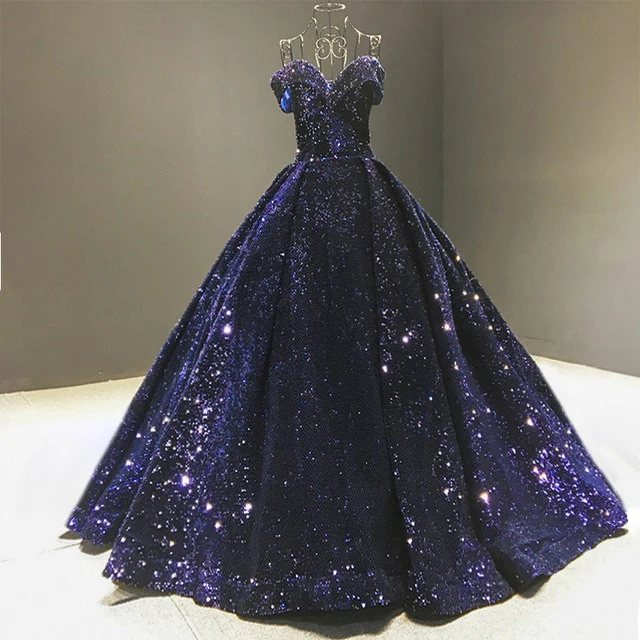In the world of fashion, few garments hold as much allure and sophistication as women’s designer dresses. These exquisite pieces are more than just clothing; they are statements of art, luxury, and individuality. Whether you’re a seasoned fashionista or someone exploring the world of high fashion for the first time, understanding the impact and evolution of designer dresses can offer a fresh perspective on style. In this blog post, we’ll explore the fascinating world of women’s designer dresses, from their history and significance to how you can incorporate these iconic pieces into your wardrobe with confidence.
The Allure of Designer Dresses
The allure of designer dresses lies in their ability to transform an ordinary moment into an extraordinary one. These garments are crafted with precision and care, often by some of the most renowned fashion houses in the world. The fabrics chosen for these dresses are of the highest quality, ensuring that each piece is as luxurious as it is beautiful. This level of craftsmanship is what sets designer dresses apart from mass-produced clothing.
Designer dresses are also a reflection of individual expression. Wearing a piece from a designer’s collection allows you to connect with the artist’s vision and showcase your unique style. This personal connection to the art of fashion can be empowering, allowing you to make bold choices that reflect your personality and values.
Lastly, investing in a designer dress is an experience in itself. From the moment you slip into one of these stunning creations, you become part of a legacy of elegance and sophistication. The history and prestige associated with designer labels add an intangible value that elevates the entire experience of wearing these garments.
A Brief History of Women’s Designer Dresses
The history of women’s designer dresses is rich and storied, with roots tracing back to the early 20th century. During this time, designers like Coco Chanel and Christian Dior revolutionized the fashion industry with their innovative approaches to women’s clothing. Chanel introduced the concept of casual elegance with her iconic little black dress, while Dior’s “New Look” redefined femininity with its cinched waists and full skirts.
Throughout the decades, designer dresses have continued to evolve, reflecting the changing societal norms and cultural shifts. The 1960s brought about a wave of rebellion against traditional fashion, with designers like Mary Quant championing the mini dress as a symbol of youthful liberation. In contrast, the 1990s saw a return to minimalism, with sleek silhouettes and monochrome palettes dominating the runways.
Today, women’s designer dresses are as diverse as the women who wear them. From avant-garde creations to timeless classics, the world of designer fashion offers something for everyone. This evolution highlights the enduring relevance of designer dresses in the fashion landscape and their ability to adapt to the desires and needs of modern women.
The Artistry Behind Designer Dresses
The artistry behind designer dresses is a testament to the skill and creativity of the designers who conceive them. Every dress begins as a concept, often inspired by a wide range of influences such as art, history, or nature. This initial vision is then translated into sketches and fabric selections, with meticulous attention to detail at every step.
Once the design is finalized, the dress is brought to life through the expertise of skilled artisans. These craftsmen and women employ techniques that have been honed over generations, such as hand-sewn embellishments, intricate embroidery, and precise tailoring. The result is a garment that not only fits perfectly but also tells a story through its design elements.
This level of craftsmanship is what makes designer dresses so exceptional. Each piece is a work of art, created with passion and dedication, and designed to make the wearer feel both confident and beautiful. The artistry of designer dresses is a celebration of creativity and innovation, showcasing the limitless possibilities of fashion.
Choosing the Perfect Designer Dress
Selecting the ideal designer dress can be an exciting yet daunting task, especially with the plethora of options available. To begin, consider the occasion for which you’re purchasing the dress. Is it a formal event like a wedding or gala, or a more casual setting like a brunch or garden party? Knowing the context will help guide your choices.
Next, think about your personal style and what makes you feel most comfortable and confident. Designer dresses come in a wide variety of silhouettes, from flowing gowns to fitted sheaths, so it’s important to choose a style that aligns with your aesthetic preferences. Consider factors such as color, pattern, and fabric, all of which can influence the overall look and feel of the dress.
Lastly, don’t be afraid to seek advice from fashion professionals or trusted friends. They can offer valuable insights and help you make informed decisions. Remember, the perfect designer dress is one that not only looks stunning but also makes you feel incredible every time you wear it.
The Role of Designer Dresses in Modern Fashion
In today’s fashion landscape, designer dresses play a pivotal role in setting trends and defining style. They are often the highlight of fashion shows, drawing attention from media and influencers alike. These runway moments can shape the direction of fashion for seasons to come, inspiring new interpretations and adaptations in mainstream fashion.
Designer dresses also serve as a means of cultural expression and commentary. Many designers use their collections to address social issues or celebrate heritage, creating pieces that resonate with audiences on a deeper level. This makes designer dresses not just clothing, but powerful vehicles for storytelling and change.
Beyond their impact on trends and culture, designer dresses have become increasingly accessible thanks to the rise of digital platforms. Online boutiques and virtual fashion shows allow a wider audience to discover and appreciate the creativity behind these pieces. This democratization of fashion empowers individuals to explore designer dresses as a viable option for their wardrobes.
Tips for Styling Designer Dresses
Styling designer dresses can elevate your look and make a statement wherever you go. One key tip is to keep accessories minimal, allowing the dress to be the focal point. Choose understated jewelry and classic shoes to complement the elegance of the garment without overwhelming it.
Another styling tip is to focus on layering. Depending on the season and occasion, you can layer your designer dress with items such as blazers, cardigans, or scarves. This adds versatility to your wardrobe, allowing you to transition seamlessly from day to night or from casual to formal settings.
Finally, don’t be afraid to experiment with unexpected pairings. Mixing high-end designer dresses with more casual elements, such as denim jackets or sneakers, can create a fresh and modern look. This approach allows you to express your personal style while showcasing the adaptability of designer fashion.
Sustainability and Designer Dresses
In recent years, sustainability has become a significant consideration in the fashion industry, and designer dresses are no exception. Many designers are now prioritizing eco-friendly practices, from sourcing sustainable materials to implementing ethical production methods. This shift reflects a growing awareness of the environmental and social impact of fashion.
When shopping for designer dresses, consider brands that are committed to sustainability. Look for labels that use organic or recycled fabrics, support fair labor practices, and limit waste in their production processes. By choosing sustainable options, you contribute to a more responsible and conscious fashion industry.
Supporting sustainable designer dresses also sends a powerful message to the industry, encouraging more designers to adopt environmentally friendly practices. This collective effort can drive meaningful change, helping to preserve our planet for future generations while maintaining the beauty and craftsmanship of designer fashion.
The Future of Women’s Designer Dresses
The future of women’s designer dresses is exciting and full of possibilities. With advancements in technology, we can expect to see innovative designs that push the boundaries of creativity. From 3D-printed fabrics to smart textiles that adapt to the wearer’s needs, the potential for innovation is limitless.
Additionally, the continued emphasis on inclusivity and diversity in fashion will shape the future of designer dresses. Designers are increasingly creating collections that cater to a broader range of body types, ethnicities, and cultural backgrounds. This inclusivity ensures that designer fashion remains relevant and accessible to all women.
Ultimately, the future of women’s designer dresses will be defined by a blend of tradition and innovation. While honoring the artistry and heritage of fashion, designers will continue to explore new materials, techniques, and ideas that reflect the evolving world around us.
Conclusion
Women’s designer dresses are more than just garments; they are expressions of art, culture, and individuality. From their rich history to their role in shaping modern fashion, designer dresses hold a special place in the hearts of those who appreciate the beauty and craftsmanship of high fashion.
Whether you’re a seasoned fashion enthusiast or new to the world of designer dresses, exploring these exquisite pieces can inspire new ways to express your personal style. Remember, the perfect designer dress is one that resonates with you and makes you feel confident and empowered.
If you’re ready to explore the world of women’s designer dresses, consider starting with renowned designers who align with your style and values. Take your time to discover pieces that speak to you and bring joy to your wardrobe. And as always, don’t hesitate to reach out for guidance and inspiration as you embark on this exciting fashion journey.




